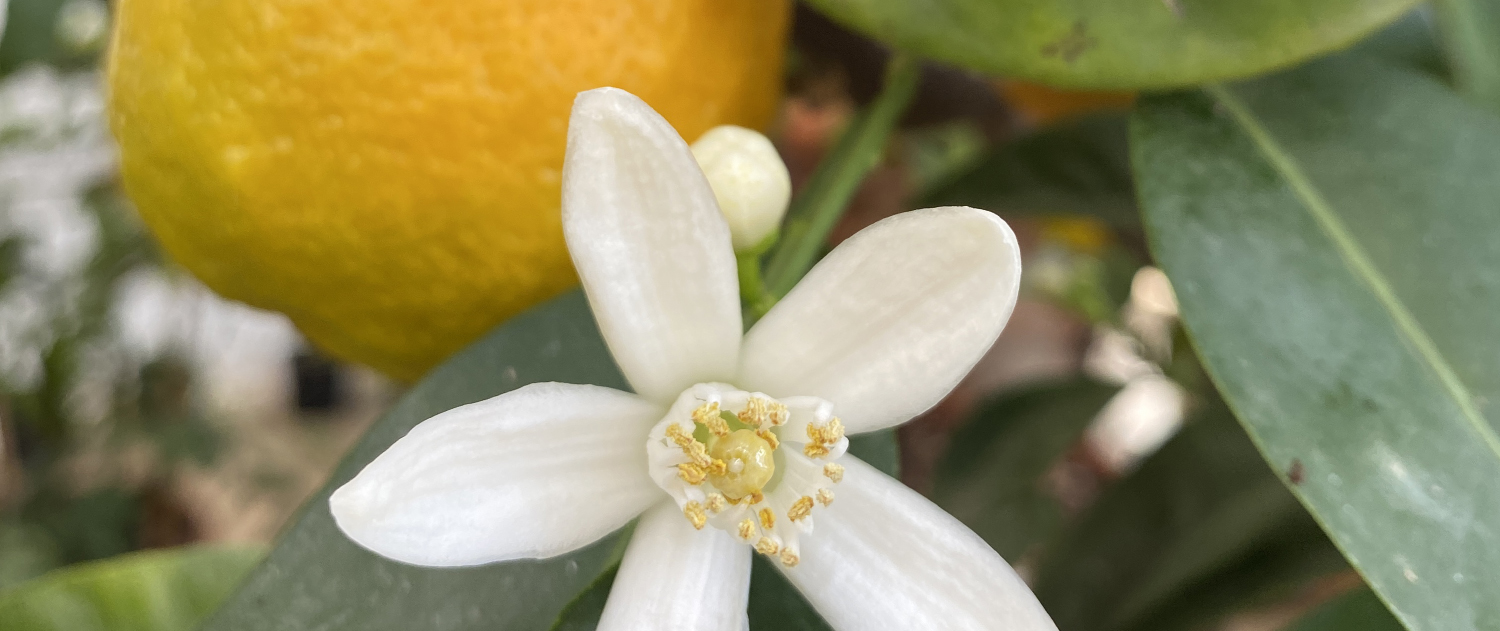Botanical Garden of Florence
Citrus fruits
All collections
Introduction | Acquatic | Citrus fruits | Trees | Wild edible plants | Araceae family | Wild shrubs | Begonias | Bromeliads | Carnivorous | Cycads | Grasses | Medicinals | Tropical orchids | Palms | Pteridophytes | Roses | Serpentinophytes | Succulent plants | Exhibits
Loved since immemorable time, citrus fruits turned out to be, over the centuries, object of study and collecting for their ornamental value, the huge variety of fruits, and their nutritional and medicinal properties.
The Botanical Garden's citrus fruit collection currently counts around 60 specimen: there are old and rare varieties, such as the bizzaria, a grafted chimera that produces fruits that are different in shape and colour every year, the melarosa and the Florentine citron, but also unusual citrus fruits such as the finger lime or Buddha's hand, a variety of scented citron whose fruit is segmented into different sections due to a genetic malformation, and other more familiar ones such as mandarin, chinotto, grapefruit, pomelo, citron, lemon, bitter orange and sweet orange.
During the winter, the collection is hosted in the Cold Greenhouse, in the area known as the 'Limonaia', while from April to October the plants, all grown in terracotta pots, are moved outdoors in front of the greenhouses.
The first record of citrus fruits in the Botanical Garden dates back to 1748 by Pier Antonio Micheli: it lists the two categories aurantium and citreum, no longer recognised as valid today.
The next paper that tells the history of the collection is the Catalogue of Plants Cultivated in the Garden drawn up in 1841 by Antonio Targioni Tozzetti: there were bitter and sweet oranges, citrons and lemons, all with many varieties.
A third source of information is the Register of the Botanical Institute of the Royal University of Florence, drawn up in 1959, which lists 81 citrus plants that came from the Mortola Garden in Ventimiglia, the Boboli Garden in Florence and private donations.
Today the work on the collection carried out by technicians and curators is twofold: on one hand, it aims at increasing the number of specimen, by including varieties and hybrids of modern conception, in order to show the great work done by genetists for productive and commercial purposes. On the other hand, its aim is to preserve the biodiversity of the oldest and rarest varieties. All the agronomic management is carried out in the most sustainable way, therefore integrating different methods of pest and pathogen control.

